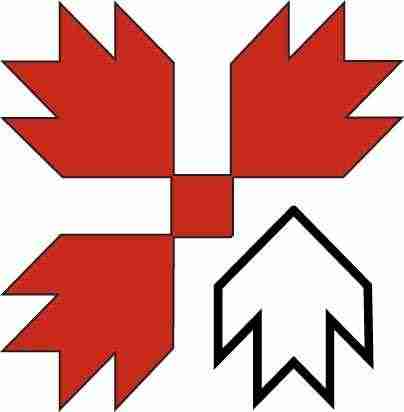
Swap Out Your Paper Scraps for Freezer Paper: A Quilter’s Guide to Simplified Foundation Piecing
Wanda ThomasShare

Why Freezer Paper?
Freezer paper is thicker than regular paper, which helps it hold up better during the sewing process. The key feature? Its waxy side, which can be lightly ironed onto fabric, ensuring that your template sticks without shifting and peels off effortlessly once you're done sewing. No more tearing and no more mess!
Step-by-Step Guide:
Print Your Template: Start by printing your quilt pattern directly onto the non-waxy side of the freezer paper. This way, you're handling far fewer sheets and using less ink. I use freezer paper that's ready for my printer, but if you want, you can get a roll of paper from the grocery store and hand draw the template lines yourself. I started with 6 templates, and will likely wear those out and print 6 more when I need to. I use the setting on my printer for "actual size" or yours might be 100%. Check the unfinished size of the block you're making and measure the first print template to make sure your sizing is what you want. Here's a free download for the one block diagonal template. Here
Cut Away The Excess Paper: Trim around your paper templates leaving about 1/2 inch extra to make working with your fabrics a little easier. Use a thin piece of template plastic or a cut cereal box paper as a guide and pre-fold each line section of the template.

Cut Fabric To Oversized Pieces: Paper piecing requires fabric waste, just try to live with that fact you 'scrapers'. I cut my fabric to be at least 1 inch larger than the piece I need, and honestly, I go even bigger because I don't ever want to be short when I trim.
Organize Your Fabrics In Order: Most patterns will give you a numerical order of sewing for paper piecing. On this particular pattern I start with the center piece and work my way towards the corners, alternating from side to side. In this example I've written the fabric print description right on the paper side of the pattern, so I'm less likely to make a mistake.

Glue The First Piece To The Waxy Side Of The Freezer Paper: I pre-fold along my template lines to make finding those landmarks a little easier from the wax side of the freezer paper. I start with a smear of my glue stick right on the section of freezer paper I'm about to use as piece number one. Then, rather quickly I line up fabric 1 and fabric 2, right sides together and place the wrong side of fabric 1 on the wax (and now glue coated) surface of the freezer paper. Think about how you line up a paper piecing project, with at least 1/4" of the fabrics extending beyond the fold line between template section 1 and 2. This starts out the same way.

Sew the Pieces: Now, you can begin sewing your pieces together. I use a smaller stitch length on my machine, about 1.8mm to 2.0mm. I line up the folded edge of the freezer paper and stitch just to the right of the fold, missing the freezer paper completely and using the fold as the straight line guild.

Open, press. stitch some more: I take my project to my ironing board and use a Teflon surface to press my template open, this secures the waxy side of the freezer paper to the wrong side of my project. If you don't have a Teflon or some type of non-stick ironing surface, you can still press, just be careful not to press the freezer paper to your ironing board too often (it will still remove easily but might leave some residue).

Fold template and trim excess fabric 1/4" past freezer paper fold: I use the straight edge of a template sheet, but you can use any thin sturdy paper (like from a cereal box) as a guide to fold the template. Then trim 1/4", repeat the sewing next to the folded freezer paper. Continue until your template is covered.

Trim around the finished block: I used a 7 1/2" square so that my blocks would all be exactly the same size. Trim the paper and the fabrics.
Peel Off: Once your blocks are assembled, simply peel the freezer paper off. It comes away cleanly, leaving no residue behind.

Personal Insight:
I made the first rendition of this quilt block using 72 pieces of foundation papers, just imagine the garbage can full of all the work of tearing. I know there's an easier way to make this block using traditional block piecing methods, but for some crazy reason, I just had to try this. I like it!

In a Nutshell:
Foundation paper piecing with freezer paper isn’t just about keeping your crafting area tidy; it’s about making the entire quilting experience more enjoyable. With fewer hassles from paper scraps and no worries about misaligned pieces, you can focus on the fun part – bringing your beautiful designs to life.
Have you tried using freezer paper for your quilting projects yet? What tips and tricks have you discovered along the way? Share your stories and suggestions in the comments below – let’s keep the quilting conversation going!
